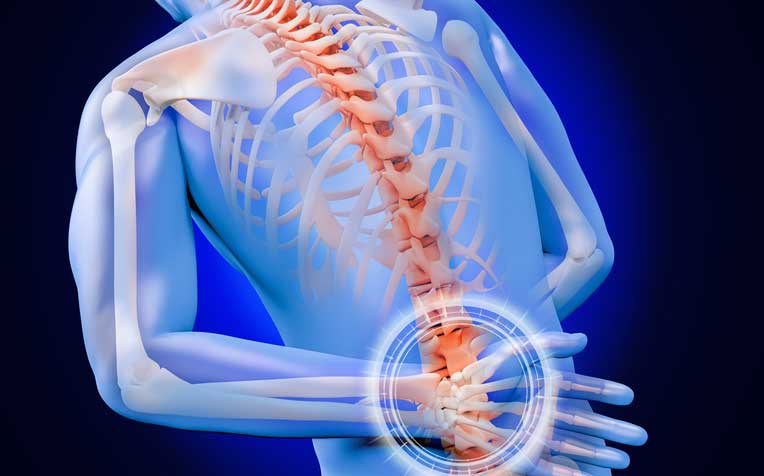HealthXchange will NEVER ask you to transfer money over a call. If in doubt, call the 24/7 ScamShield helpline at 1799, or visit the ScamShield website at www.scamshield.gov.sg.
Ankylosing Spondylitis (Spine Inflammation): Causes and Symptoms

Ankylosing spondylitis or inflammation of the spine can develop from a genetic disorder.
Do you have low back pain that is worse at night, in the morning or after a prolonged period of inactivity? Does it improve with exercise?
This type of low back pain can be an early symptom of ankylosing spondylitis, an inflammatory disease of the spine.
Ankylosing spondylitis is a type of arthritis called spondyloarthritis, and typically affects the joints of the spine. However, it can also affect the peripheral joints in the body such as the hips, knees, ankles and feet. Patients may experience problems with walking, getting out of bed, bending forward and other daily activities.
Symptoms of ankylosing spondylitis (spine inflammation)
Apart from low back pain, other symptoms of ankylosing spondylitis include:
Stiffness in the back
Stooped posture
Back, hip and heel pain
Pain and swelling in the peripheral joints eg. shoulders, knees and ankles
Stiffness in the chest causing chest tightness and occasionally breathlessness
Limited range of motion involving the spine and hips
Fatigue
“Low back pain is a common symptom, but only about 5% of sufferers may have spondyloarthritis,” says Dr Warren Fong, Senior Consultant at the Department of Rheumatology and Immunology and the Autoimmunity and Rheumatology Centre, Singapore General Hospital (SGH), a member of the SingHealth group.
“In Singapore, it is estimated that about 2-10 in 1,000 people suffer from ankylosing spondylitis,” says Dr Fong.
The symptoms of ankylosing spondylitis vary between patients and can be mild or severe.
When the disease progresses to a severe stage, new bone called the syndesmophytes may form in the gap between the spinal vertebrae, causing them to fuse together and become rigid and inflexible. This condition is referred to as “bamboo spine”. In the worst case, the spine may be permanently in a bent position, causing severe immobility and deformity.
Fusion can also cause stiffness of the rib cage, which can affect the functioning of the lungs and causing breathing difficulties in patients.
“Several studies have shown that uncontrolled inflammation may lead to an increased risk of cardiovascular disease such as ischemic heart disease and cerebrovascular events (stroke)",” says Dr Fong.
Patients with ankylosing spondylitis may also have inflammation in non-skeletal areas, such as the eye, skin and bowel.
Read on for the risk factors of ankylosing spondylitis.
Ref: O17
Check out other articles on back pain:
Lower Back Pain: When to See a Doctor
Contributed by
Related Articles
Conditions & Treatments
Public Events
Get the Health Buddy App
© 2025 SingHealth Group. All Rights Reserved.
















 Get it on Google Play
Get it on Google Play